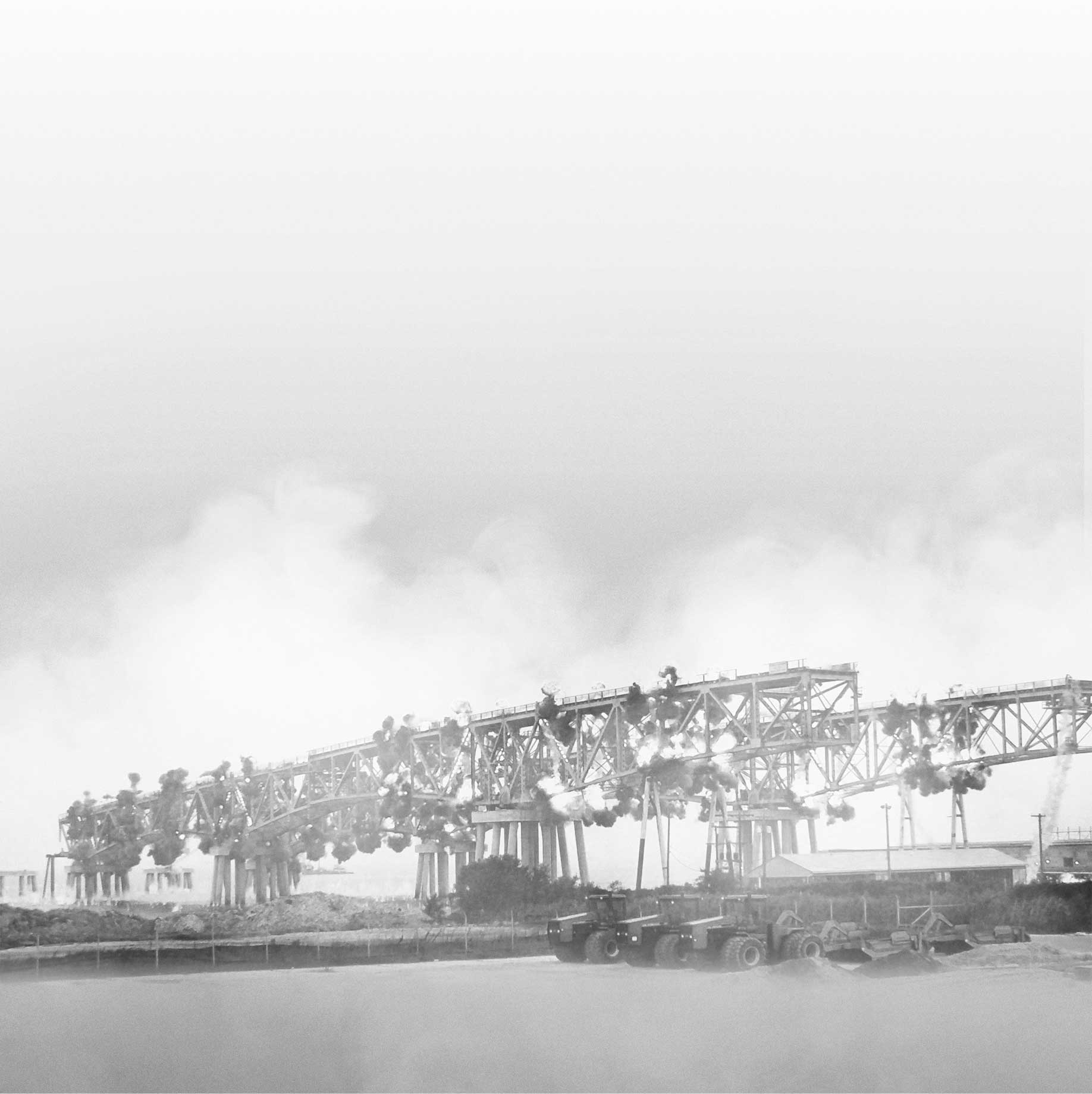Kosciuszko Bridge

PROJECT OUTLINE
After completion of construction of the first half of the Kosciuszko Bridge replacement from Brooklyn to Queens by the Skanska/Kiewit/ECCO III (SKE) Joint Venture, all that remained was demolition of the original 22-span structure. SKE had invested considerable funds in strand-jacking the main span through-truss down over New Town Creek but had fallen behind on that phase of the work, pushing back their conventional demolition of the 21-approach spans. The second phase of the Kosciuszko Bridge construction had already been awarded to another contractor and the pressure on SKE to complete demolition operations rose all the way to New York Governor Andrew Cuomo’s office.
After CDI successfully felled multiple bridges for his Administration in the Empire State at the Governor’s request, CDI looked at how an energetic felling approach could expedite clearance of the existing structure, as close as 5’ away from the piers of the new cable-stayed main span.
After extensive analysis of the existing deck-truss approaches on either side of the river, CDI provided a Proposal, which would solve the scheduling conflict for completion of SKE’s demolition operations.
Lastly, the RFP called for a design-build of new end-wall closures for the two (2) adjacent laboratories, backfilling of the basement/grading of the site for paving and new concrete construction supporting adjacent improvements.
“CDI’s recent energetic felling of the Kosciuszko Bridge is a prime example on how technology can improve project safety and reduce construction time. This was the first time that controlled explosive cutting charges were allowed in the City to demolish a bridge 5 ft (1.5 m) from the newly constructed bridge and piers and 25 ft (7.6 m) from existing structures. The cost savings in time using controlled explosives rather than inherently dangerous mechanical cutting methods could not even be computed.”
oseph A. Meyers, Chief Inspector of the Explosives Unit for the New York Fire Department, in The Journal of Explosives Engineering
PREPARATION
Preparations, per CDI’s engineered plan, were performed under guidance of CDI’s on-site personnel over a matter of weeks and CDI’s crews, working with SKE Union personnel, placed and covered 944 linear shaped charges at key points on the 21 spans being felled, even while cushioning berms of crushed concrete and timber crane mats were placed beneath the spans to protect 100-year old utilities, railroad lines, and buried communications and fuel transmission lines passing under the various spans on the Brooklyn and Queens’ sides of the waterway.
CDI’s energetic felling (implosion) of the Bridge was also coordinated with restrictive vibration limits imposed by the immediately adjacent cemetery, which flanked 60’ on one side of the Queens’ approach, and monitoring wells in a superfund site just 23’ away on the other.
CDI felled the 22 million pounds of steel in a single explosives event, exactly as planned, without damage to the new bridge, utilities/facilities below or impact on sensitive adjacent improvements.
Vibration monitored by an independent third-party geotechnical firm indicated that CDI’s pre-blast vibration and peak overpressure estimates, based on decades of CDI’s historic data on similar projects, were at or below expected levels.
The energetic felling of the bridge put SKE back on track, allowing for rapid cleanup of the post-blast debris to permit the follow-on contractor to begin Phase 2 construction of the new Kosciuszko Bridge, on schedule.
Click HERE to watch the Kosciuszko Bridge implosion.

